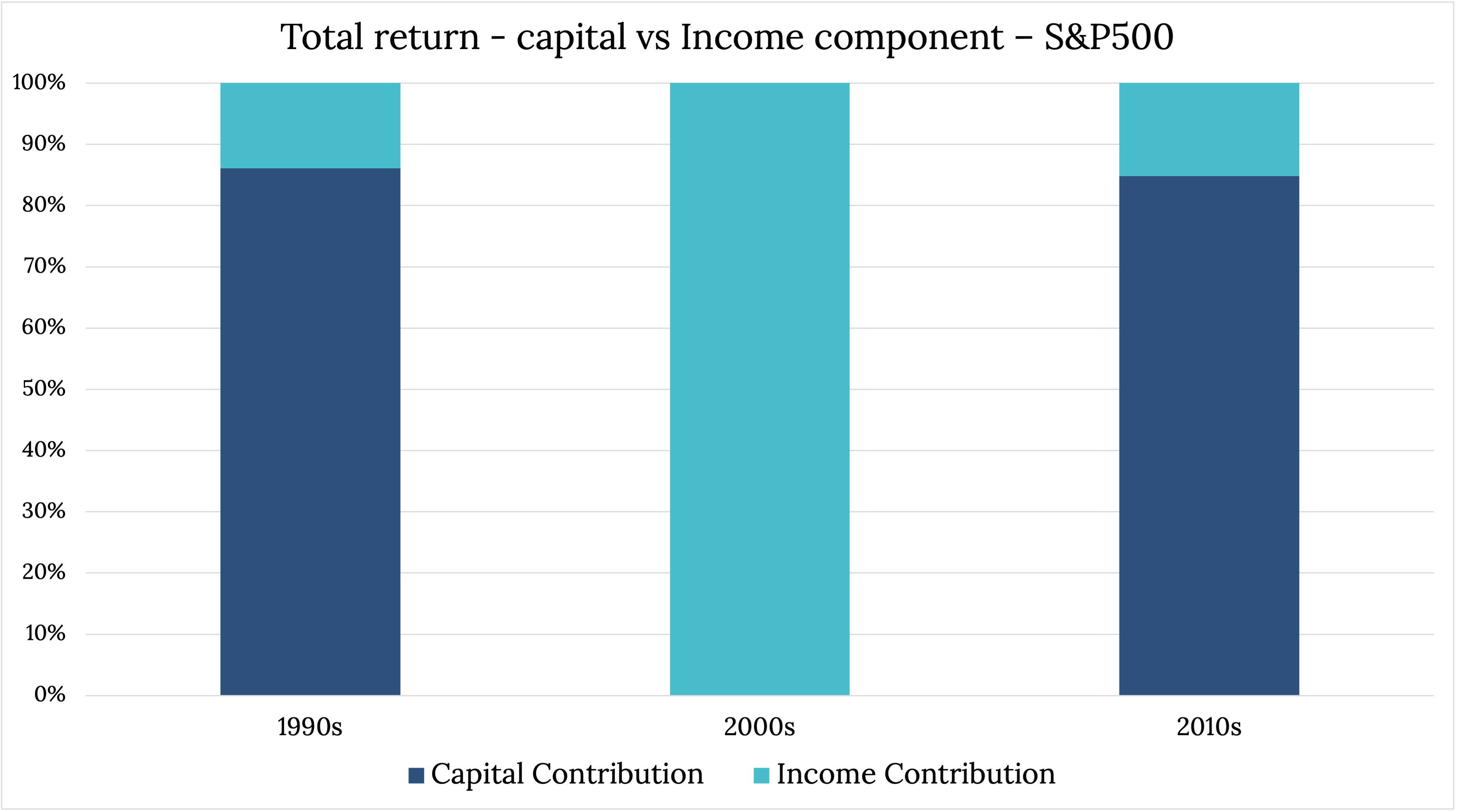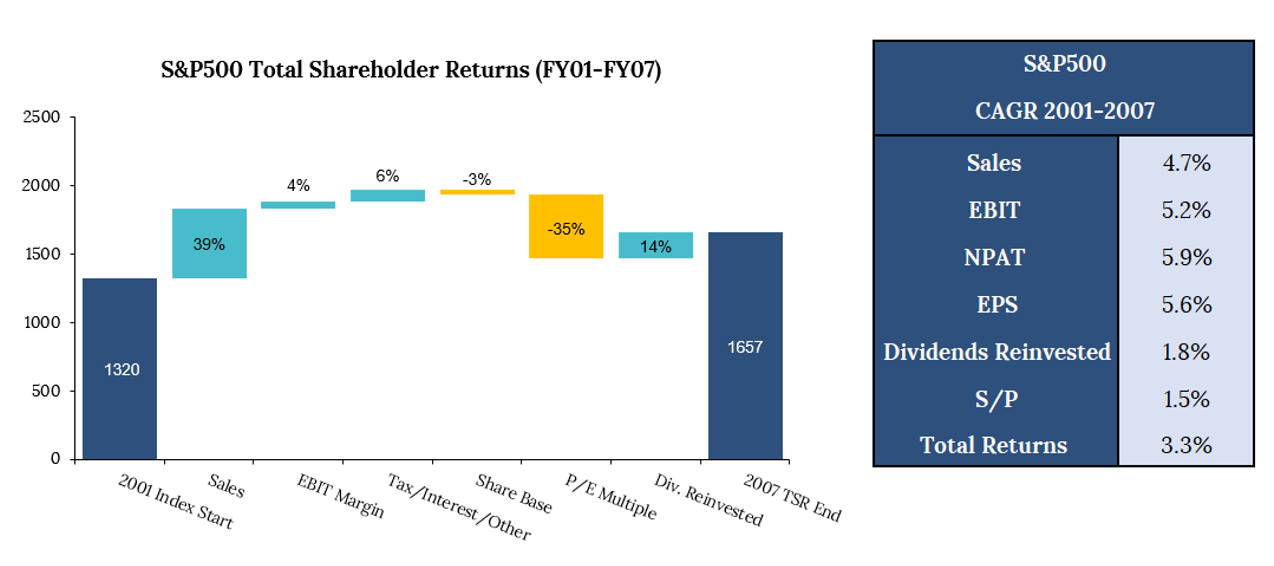Why you need an income engine
Savers have long recognised the need to balance income and capital, but recently this has proven difficult as yields of all asset classes have fallen to very low levels. At the same time, capital returns have had a bull run.
In fact, the only decade where returns to capital in the S&P500 were as high as the last decade was the 1990s, and subsequently, the following decade’s return was entirely down to the income component.

So, since the GFC, it has been better to hold the capital than seek income but with prospective returns now low and interest rates at some point likely to rise, this is going to change.
In practical terms, income will be a greater component of total returns going forward regardless of the inflation outlook.
Looking at the breakdown below you can see that from 2001 to 2007, even though the index as a whole continued to grow sales (4.7% p.a.), the starting valuations were so high that the sales growth was offset by a valuation de-rate (-35% p/e) such that the shares only increased 1.5% p.a.
However, if you had the income component, you boosted your total return by over 50% p.a. during that 7-year period.

- a trade-off between yield and growth,
- yields that are unsustainably high,
- high volatility, and
- greater sensitivity to risk-off events.
Finding a source of income that diversifies risk, does not result in markedly higher volatility, and changes the mix of savers’ returns to a greater balance of the capital and income components is important but not easy.
Not easy but possible - and in our case achieved through the implementation process, receiving a minimum 15% contracted rate of return per annum as a result of our commitment to buying a share we want to own. This flows through in the form of an income stream that is not dependent on a company’s ability or management’s desire to pay a dividend to shareholders.
In other words, an income engine.
Not an existing Livewire subscriber?
If you're not an existing Livewire subscriber you can sign up to get free access to investment ideas and strategies from Australia's leading investors.
And you can follow my profile to stay up to date with other wires as they're published – don't forget to give them a “like”.
5 topics
1 contributor mentioned

